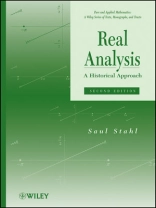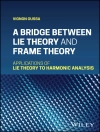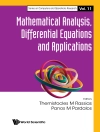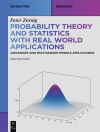A provocative look at the tools and history of real
analysis
This new edition of Real Analysis: A Historical Approach
continues to serve as an interesting read for students of analysis.
Combining historical coverage with a superb introductory treatment,
this book helps readers easily make the transition from concrete to
abstract ideas.
The book begins with an exciting sampling of classic and famous
problems first posed by some of the greatest mathematicians of all
time. Archimedes, Fermat, Newton, and Euler are each summoned in
turn, illuminating the utility of infinite, power, and
trigonometric series in both pure and applied mathematics. Next,
Dr. Stahl develops the basic tools of advanced calculus, which
introduce the various aspects of the completeness of the real
number system as well as sequential continuity and
differentiability and lead to the Intermediate and Mean Value
Theorems. The Second Edition features:
* A chapter on the Riemann integral, including the subject of
uniform continuity
* Explicit coverage of the epsilon-delta convergence
* A discussion of the modern preference for the viewpoint of
sequences over that of series
Throughout the book, numerous applications and examples
reinforce concepts and demonstrate the validity of historical
methods and results, while appended excerpts from original
historical works shed light on the concerns of influential
mathematicians in addition to the difficulties encountered in their
work. Each chapter concludes with exercises ranging in level of
complexity, and partial solutions are provided at the end of the
book.
Real Analysis: A Historical Approach, Second Edition is
an ideal book for courses on real analysis and mathematical
analysis at the undergraduate level. The book is also a valuable
resource for secondary mathematics teachers and mathematicians.
Содержание
Preface to the Second Edition
Acknowledgments
1. Archimedes and the Parabola
1.1 The Area of the Parabolic Segment
1.2 The Geometry of the Parabola
2. Fermat, Differentiation, and Integration
2.1 Fermat’s Calculus
3. Newton’s Calculus (Part 1)
3.1 The Fractional Binomial Theorem
3.2 Areas and Infinite Series
3.3 Newton’s Proofs
4. Newton’s Calculus (Part 2)
4.1 The Solution of Differential Equations
4.2 The Solution of Algebraic Equations
Chapter Appendix. Mathematica implementations of Newton’s
algorithm
5. Euler
5.1 Trigonometric Series
6. The Real Numbers
6.1 An Informal Introduction
6.2 Ordered Fields
6.3 Completeness and Irrational Numbers
6.4 The Euclidean Process
6.5 Functions
7. Sequences and Their Limits
7.1 The Definitions
7.2 Limit Theorems
8. The Cauchy Property
8.1 Limits of Monotone Sequences
8.2 The Cauchy Property
9. The Convergence of Infinite Series
9.1 Stock Series
9.2 Series of Positive Terms
9.3 Series of Arbitrary Terms
9.4 The Most Celebrated Problem
10. Series of Functions
10.1 Power Series
10.2 Trigonometric Series
11. Continuity
11.1 An Informal Introduction
11.2 The Limit of a Function
11.3 Continuity
11.4 Properties of Continuous Functions
12. Differentiability
12.1 An Informal Introduction to Differentiation
12.2 The Derivative
12.3 The Consequences of Differentiability
12.4 Integrability
13. Uniform Convergence
13.1 Uniform and Non-Uniform Convergence
13.2 Consequences of Uniform Convergence
14. The Vindication
14.1 Trigonometric Series
14.2 Power Series
15. The Riemann Integral
15.1 Continuity Revisited
15.2 Lower and Upper Sums
15.3 Integrability
Appendix A. Excerpts from ‘Quadrature of the Parabola’ by
Archimedes
Appendix B. On a Method for Evaluation of Maxima and Minima by
Pierre de Fermat
Appendix C. From a Letter to Henry Oldenburg on the Binomial
Series (June 13, 1676) by Isaac Newton
Appendix D. From a Letter to Henry Oldenburg on the Binomial
Series (October 24, 1676) by Isaac Newton
Appendix E. Excerpts from ‘Of Analysis by Equations of an
Infinite Number of Terms’ by Isaac Newton
Appendix F. Excerpts from ‘Subsiduum Calculi Sinuum’ by Leonhard
Euler)
Solutions to Selected Exercises
Bibliography
Index
Об авторе
SAUL STAHL, Ph D, is Professor in the Department of Mathematics at The University of Kansas. He has published numerous journal articles in his areas of research interest, which include combinatorics, discrete mathematics, and topological graph theory. Dr. Stahl is the author of Introductory Modern Algebra: A Historical Approach and Introduction to Topology and Geometry, both published by Wiley. He was awarded the Carl B. Allendoerfer Award from the Mathematical Association of America for expository articles in both 1986 and 2006.












